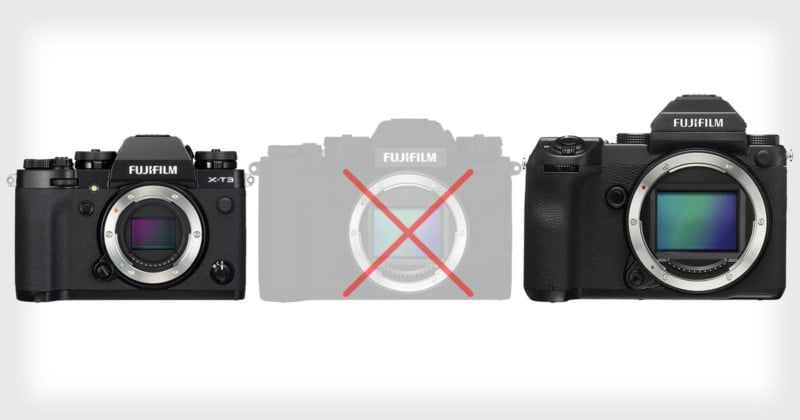
![]()
Fujifilm’s GFX series of cameras has already redefined what digital medium format cameras can be with their relatively small price tags and form factors, but the company is just getting started — it wants to help GFX break into the mainstream by making digital medium format even cheaper, smaller, and lighter.
cinema5D recently sat down with Fujifilm General Manager Toshi Iida and interviewed him about a wide range of subjects. One of the things discussed was Fujifilm’s plan for going up against 35mm full-frame cameras.
cinema5D: […] full frame cameras are kind of dropping in price. And they’re doing quite a good job. Do you think in the future you will be able to also bring the price down of a medium format and accommodate the needs of filmmakers, something that is a bit more cost-effective and that can compete also price-wise with full frame cameras?
Toshi Iida-san: Of course we’re fully aware about our competition. And we already started doing GFX50 at a very attractive price point already, but the response is great. So it’s always our ambition to make the GFX a mainstream product. To make the GFX a mainstream product we need to continue our effort to make it more affordable and probably smaller and lighter. So this is one way we’re focusing on.
Iida declared back in October 2018 that Fujifilm “will never go full-frame” and was instead focusing its attention solely on APS-C and medium format.

Sony’s top-of-the-line a9 II full-frame mirrorless camera is currently priced at $4,500, which is exactly what Fujifilm’s bottom-of-the-line GFX 50R medium-format mirrorless camera costs. So price-wise, at least, the GFX series is already knocking at full-frame’s door.
In the area of portability, however, the GFX is still a bit more bulky and heavy compared to Sony’s mirrorless cameras (775g vs 673g). Here’s a size comparison by the web tool Camera Size Comparison:
![]()
If Fujifilm can successfully bring the entry-level price point of its digital medium format camera line below Sony’s flagship full-frame camera and close the gap in portability — the weight difference is already only about 15% — the GFX line would be an even more compelling option for photographers who prefer the benefits of a larger sensor over speed and sleekness.
And if the Fujifilm GFX line does manage to break out and become a mainstream product, perhaps other camera manufacturers will be emboldened to take the leap into medium format as well.

